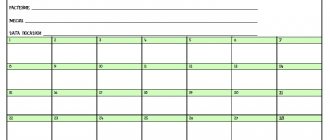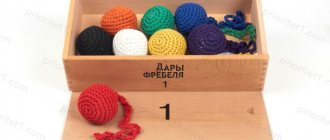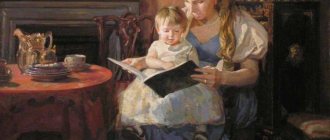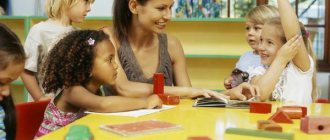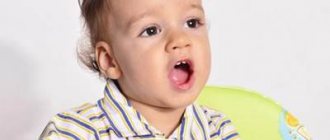Analysis of modern classes in preschool educational institutions
Margarita Rabzhaeva
Analysis of modern classes in preschool educational institutions
Analysis of modern classes in preschool educational institutions according to the Federal State Educational Standard
1. Topic of the lesson . 2. Date and place of its holding. Who conducts it?
3. Group. 4. Purpose of the lesson :
• to solve what problems and develop what personality traits of students this lesson ;
• how the specificity and realism of the goal is realized (from the point of view of sufficient time to complete it, compliance with the children’s preparedness for solving it in previous lessons , the capabilities and abilities of the children);
• how the integration of educational areas is implemented in accordance with the age capabilities and characteristics of students in the classroom .
5. Psychological justification for choosing the form and content of the activity:
• compliance of the lesson with general educational and correctional-developmental goals and objectives, the level of development of students, and their age characteristics;
• implementation of a comprehensive thematic principle (the topic of a particular lesson is chosen in the context of the general topic being studied);
• during the lesson, the joint activity of an adult and children is realized, the main component is interaction.
2. Observing the progress of the lesson
How convincingly, clearly, emotionally were the goals and objectives of the upcoming activity revealed to the students?
How meaningful, interesting and organized was the work?
What knowledge did the students acquire during the lesson :
what vital values were formed.
3. Controllability of the lesson :
• how the opportunity to evaluate intermediate and final results is implemented;
• what conclusions did the students make during the course and at the end of the work;
• what results have been achieved.
How did the lesson the formation of public opinion of the group and individual students on their relationships:
• what could be the consequence of this activity for the development of the team, for the formation of its social orientation;
What is its impact on individual pupils:
• emotional and aesthetic responsiveness to beauty in art;
• work ethics, artistic activity;
Methods of work, the nature of relationships, their compliance with educational tasks, age and individual characteristics, the level of development of relationships in the group team.
4. General assessment of the educational event
• To what extent were educational goals and objectives achieved?
• Reasons for successes, failures, mistakes?
• General assessment of the educational value of the work performed.
•Psychological and pedagogical conclusions and suggestions to teachers and students:
• the effectiveness of the lesson in relation to each child;
• analysis of children’s activities (by the teacher)
and
children's self-analysis of their work ;
• reflective moment (the teacher encourages the child to express his attitude to the situation, to his activity).
5. Analysis of the teacher’s activities
Which character traits of the teacher contributed to effective work with students, and which, on the contrary, hindered:
• the teacher encourages children to show initiative and independence, encourages the manifestation of subjectivity;
• the teacher stimulates and encourages individual achievements of children;
What pedagogical abilities were demonstrated when carrying out effective work with students?
• the teacher takes into account the characteristics of each child (pace of activity, emotional state, level of development of mental processes, temperament);
• the teacher “sees”
each child: helps, stimulates, encourages
Analysis of GCD classes in accordance with the requirements of the Federal State Educational Standard
my analysis with the question: did I manage to cope with the main didactic goal of the presented lesson , which in turn had a trinity of goals, as an image of the desired result. Let me remind you that the goal is pedagogical, the development of the educational process, professional and personal self-development.
I believe that the main indicator of achieving a pedagogical goal is the solution of the tasks I set for the lesson , the results of which you saw during reflection in the children’s art activities. During the lesson, it was possible to see the children’s supra-subject skills, which manifested themselves in generalization when talking about winter, in comparison and analysis of children when performing a didactic exercise on the relationship between an animal and its trace, and in comparing children’s pictures with a forest clearing. The children also implemented a chain of subordinate goals in drawing, when the children, after analyzing , built a system of actions to achieve a result.
During the lesson, the children performed creative tasks, during which we saw the ability to imagine, these are the “Snow”
,
“Getting ready for a walk”
,
“Snowflakes”
, during the sketch you saw the development of children’s facial skills, the opportunity to express themselves, as well as the aspect of moral education, which consisted of expressing sympathy, pity for the hero, caring for him.
The children actively communicated with the teacher and answered questions that were higher in nature than the level of questions for younger children. And I think the most important thing is children’s interest in the activity , which is an indicator of the effectiveness of children’s activities at a given age. The goal of the educational process was achieved by me using all groups of methods, i.e. methods of achieving the goal, visual, verbal, practical, gaming, which reflected the same topic and were interrelated.
I implemented these methods using a variety of techniques such as a teacher’s example, showing methods of action, looking at illustrations, using teaching aids in the form of objects that correspond to the educational objectives of the lesson , questions, artistic expression, explanations of actions, children’s exercises, didactic games and game exercises. I achieved the research goal of the lesson
I conducted an integrated lesson , where you saw the interdisciplinary connection between speech, visual, musical, and motor activities; I tried to conduct a dialogue with the children, choosing a democratic style of communication, which was visible in inviting children to participate in exercises, taking into account the child’s opinion, desire to complete the task, answer questions. question. My personal goal, which is the activity and results of the children’s activities during the lesson , was also achieved, as I said above, the children, due to their interest, were activated throughout the lesson and mastered the technique of drawing with their palm and finger.
"Exhibition of Miracles and Fantasies." Photo report from the Museum of Modern Art Lyudmila Rybakova. "Exhibition of Miracles and Fantasies." Photo report from the Museum of Modern Art. “The greatest scientific discoveries over time.
Analysis of a speech lesson conducted incorrectly Analysis of a speech lesson (conducted incorrectly) Topic: “Home helpers” Age: 4-5 years There is no purpose of the lesson. According to the Federal State Educational Standard, the tasks must.
Birthday of Santa Claus: the story of a modern wizard Surprisingly, the good Grandfather Frost was born in the fall. All children and adults who believe in miracles celebrate the birthday of the winter wizard. Photo report on the conference “Competence-based activity-based approach in the modern education system” In accordance with the annual plan of methodological work, a scientific and practical workshop was held at the Leushin boarding school for students with disabilities.
Consultation for parents “The role of music in the life of a modern child” The role of music in the life of a modern child. Consultation for parents From a very early age, children are very sensitive and emotional.
The role of physical education in the system of modern school education Currently, there is a significant change in Russian education, which requires active transformations in the field of physical education.
Photo report “Exhibition of contemporary art “Cinema” in Krasnodar” In mid-August, the opening of the exhibition of contemporary art “Cinema” took place in the Krasnodar Exhibition Hall of Fine Arts.
Source
Methodological commentary for the lesson “Travel with a Kolobok”
Methodical comment
for the integrated lesson “Travel with a Kolobok”
1-Peresypkinsky branch of MBOU 2-Gavrilovskaya sosh.
Preschool teacher Nosaeva Irina Alekseevna.
Age group: 5 years (8 people)
This lesson traces the integration of educational areas: the leading one is “Formation of mathematical concepts”, as well as “Cognitive development”, “Artistic and aesthetic development”, “Physical development”, “Social and communicative development”, “Speech development”
The joint activity of the teacher and children of the preparatory group is the final stage of the thematic cycle from the PEP (main educational program) of the preschool educational institution: “Geometric shapes”, “Counting to five” (adult-children (partnership) activities No. 3 and No. 4)
Integrated classes with preschoolers combine knowledge from different educational areas on an equal basis, complementing each other (considering such a concept as “the desire to help” through the creation of imaginary problem situations).
During the lesson, the teacher used effective methods and techniques to solve the goals and objectives of the integrated lesson:
Comparative analysis, comparison, search.
Problematic questions, the use of tasks such as “prove”, “explain”, “how did you know?” and etc.
A variety of didactic games for the formation of mathematical knowledge.
The teacher has fulfilled the basic requirements for an integrated lesson:
Clarity, compactness, conciseness of this material.
Thoughtfulness and logical interconnection of all stages of the lesson;
Interdependence, interconnectedness of the material of integrated subjects at each stage of the lesson;
Large information capacity of educational material used in the lesson.
Systematic and accessible presentation of the material.
The need to adhere to the time frame of the lesson.
When choosing the topic of the lesson and materials for it, the teacher relied on the basic principles of didactics, which underlie the educational program of the preschool educational institution, the exemplary educational program “From birth to school”, ed. N.E. Veraksa, took into account the age and gender characteristics of children, as well as their levels of development.
The group teacher conducted preliminary work with the children: reading fairy tales, looking at illustrations, didactic games in mathematics
The following forms of organizing children were used:
group – d/i “Lay it out correctly”, “Count the nesting dolls”, visual, breathing and finger exercises;
individual – d/i “Define a geometric figure”, “Collect chanterelle beads”
The following conditions were thought out:
1. The room is ventilated and clean.
2. The placement of children has been thought out and the equipment has been arranged.
3. Appropriate material for joint learning activities has been prepared.
The structure and content of the lesson corresponds to the age capabilities of the children and consists of 3 interconnected parts: introductory, main and final.
Characteristics of parts of the lesson:
The introductory part of the lesson is aimed at motivating children. At this stage, the problematic situation “Help the bun return home” was proposed, which stimulated the children for further activities: completing the teacher’s tasks, intensifying cognitive activity, and also aroused the children’s interest in further work.
The main part of the lesson was based mainly on the use of all groups of methods: visual, verbal, practical, which reflected the same topic and were closely interrelated.
Visual:
illustrative colorful material, demonstration, presentation;
Verbal: composing constructions - simple sentences, reading poetic texts, pedagogical assessment: teaching during the lesson and educating at the end of the lesson;
Practical: children perform visual, respiratory and finger exercises, participate in didactic games.
The set of methods used made it possible to increase the effectiveness - children’s mastery of the chosen topic. The teacher tried to reveal these methods using a variety of techniques. The following were selected from the main techniques: the reproductive method - a sample of correct speech, questions, verbal explanations for actions, the teacher’s speech was a model for children: the speech was clear, emotional, literate, and the activity was aimed at the effectiveness of the planned methods and techniques; the research method - solving a problem-game situation - we will help the “bun” to return home. ESM was also used: sound and visual files. Health-saving technologies: finger, visual and breathing exercises.
The final stage, at which the educational activities were summed up with the help of children’s answers to the questions asked.
The variety of equipment and materials used in the lesson made it possible to maintain the attention and cognitive interest of children throughout the lesson. Throughout the lesson, a situation of success was created for each child. Joint communication was emotional, partnership relations were maintained throughout the entire lesson (which is what the Federal State Educational Standard for Education defines).
The goal of the lesson was achieved through the implementation of all assigned tasks.
How to analyze an open lesson in kindergarten
Analysis of activities in kindergarten should be carried out regularly. If we are talking about an open lesson, then analysis is a prerequisite for conducting a demonstration lesson. After all, it is this form of interaction between the teacher and students that allows you to look at the educational process from the inside, and therefore evaluate not only the final result: the knowledge, abilities and skills of children, but the ways in which the teacher achieves them. At the same time, carrying out the analysis also requires taking into account certain methodological subtleties.
Determining the goals of the analysis
An open lesson in kindergarten is held with the aim of demonstrating the pedagogical skills of the teacher in working with children. In particular, show a variety of techniques used to achieve the educational objectives. On the other hand, demonstration lessons allow you to see progress in the development, training and education of children. In order to correlate these tasks, an analysis of the open lesson is carried out. In addition, analysis of an open lesson allows you to achieve a number of other goals.
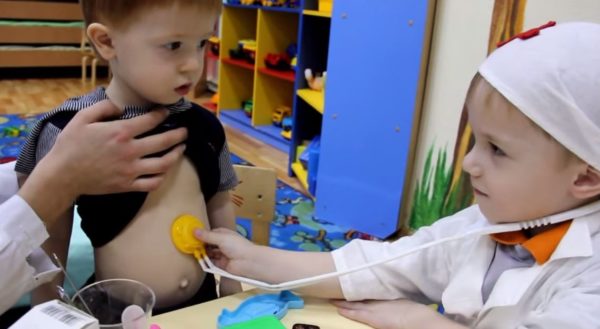
Each stage of the lesson, especially the game one, must be accompanied by suitable equipment, then the lesson will be bright and memorable
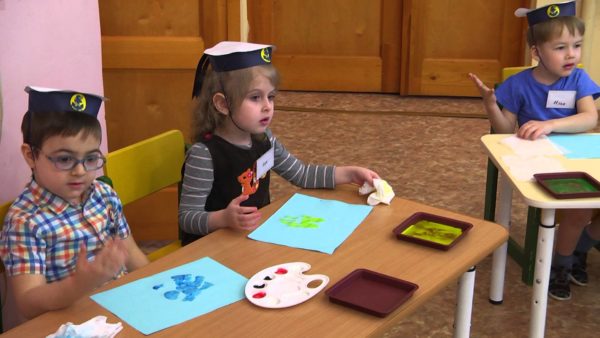
Verbal, visual, gaming and creative techniques must be correctly combined
Types of analysis from different points of view: self-analysis and peer analysis
Each lesson in kindergarten, in accordance with the instructions of the Federal State Educational Standard, is subject to self-analysis. However, if such an analysis is usually carried out by a teacher in a free form and reduces all analyzed positions to an assessment of “it worked - it didn’t work,” then an open lesson is considered in detail.
In addition, an open lesson implies the presence of guests: kindergarten methodologists, colleagues, representatives of the city and/or regional methodological association of workers of preschool educational institutions (PED), as well as parents. In this regard, the analysis of the demonstration lesson is carried out by the teachers present at it:
This is interesting. In recent years, methodologists have defended the opinion that it is necessary to invite mothers and fathers to open classes so that they can see their child in the work process, in interaction with the teacher and with peers. And also such visits will allow you to involve the family in the educational process.
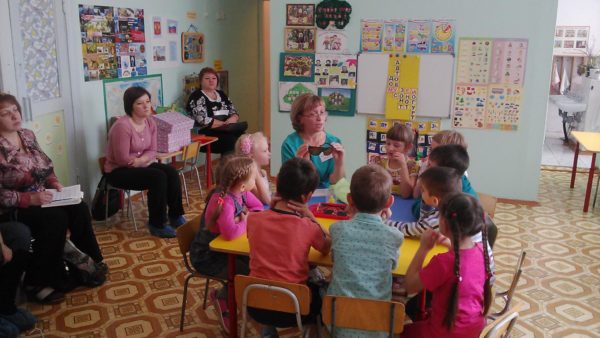
Parents are usually happy to attend open classes whenever possible, providing moral support to their children
So, analysis of an open lesson can be of two types, depending on who is doing it:
How self-analysis is carried out
Of course, the algorithm for the two types of parsing will be slightly different. Generally speaking, self-analysis will be more subjective, because it is not for nothing that there is an opinion that a good lesson for a teacher is a child, whom it would be a pity to scold.
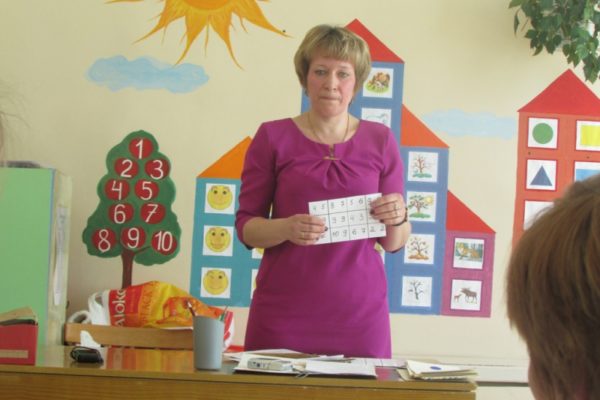
Self-analysis is a unique genre of analysis, which is characterized by a subjective approach
The author’s analysis of the lesson is intended to:
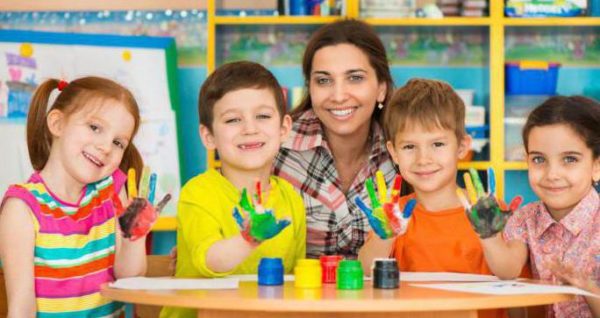
The emotional background is one of the most important assessment parameters, because the productivity of both children and the teacher depends on it
Algorithm for self-analysis
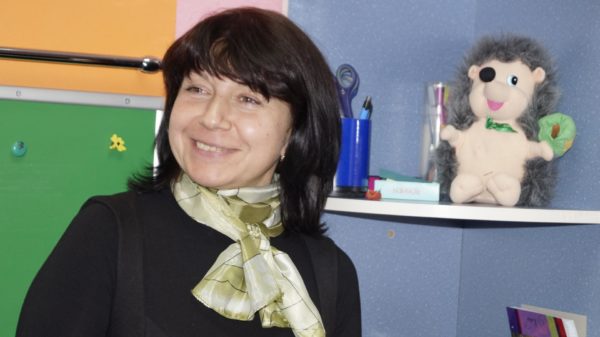
Self-analysis is carried out according to a certain scheme
Examples of self-analysis of open classes
Even with an analysis algorithm in practice, some analyzes are more emotional and subjective, which is often expressed in the absence of shortcomings.
Self-analysis of a complex lesson in the middle group “Journey to the Thirtieth Kingdom to Ivan Tsarevich”
The lesson was conducted with children of the middle group, 16 children were present. Children in this group have developed learning skills. Children easily make contact with adults. They know how to hear and listen to the teacher.
Theme of the lesson: “Journey to the thirtieth kingdom to Ivan Tsarevich.” This activity is complex, it combines educational areas: cognition, socialization, work, communication, fiction, physical education, artistic creativity and music. When developing this lesson summary, I first of all took into account the age, mental, and individual characteristics of children in the middle group. Taking all this into account, I outlined the goal, objectives, content of the lesson, determined the form of delivery, methods, techniques and means necessary for positive results.
The purpose of the lesson is designated as the activation of children’s mental abilities, logical thinking, and children’s creative abilities.
I set the following tasks: educational - to teach how to creatively and proactively approach solving problematic problems, to teach how to select figurative and opposite words; developmental - develop analytical, aesthetic perception, sustained attention, memory, speech, imagination, continue to develop ideas about geometric shapes, strengthen children’s ability to draw in unconventional ways (with cotton swabs, cork impressions); educational - to cultivate moral qualities: kindness, responsiveness, desire to help others during a joint discussion.
I introduced a playful motivation into the lesson: a journey into a fairy tale.
During the lesson, learning was structured as an exciting problem-based game activity. Traveling on the bus, children performed various tasks. This activity created a positive, emotional background for the learning process, increased children’s speech activity and maintained interest throughout the lesson.
During the lesson, I used visual, verbal and practical techniques aimed at using speech, cognitive, motor, practical skills and abilities and improving them. The proposed tasks were given in order of increasing complexity, which contributed to the solution of the assigned tasks for the development of attention, imagination, memory, speech and artistic and aesthetic perception. Throughout the entire lesson, the children were friendly, responsive, and helped each other.
The type of lesson is complex. Which contributes to solving the assigned tasks in a comprehensive manner.
All stages of the lesson were interconnected and interdependent, subordinated to the given topic and goals of the lesson. Changing the type of activity at each stage of the lesson made it possible to prevent fatigue and satiety with one type of activity. Children dynamically switched from word games to playing with objects and drawing.
To obtain better performance results for children, a variety of materials were used: visual aids, didactic handouts, ICT. The visual material corresponded to the topic and purpose of the lesson.
At all stages of the lesson, the speech, cognitive, and motor activity of the children intensified.
The following methods were used in the lesson: verbal (were used several times) to create game motivation, solving problem situations, dialogue with Ivan Tsarevich; visual methods were used throughout the lesson when looking at a magic map, geometric shapes, and drawing samples; practical methods - performing a creative task (drawing feathers for the Firebird).
A method of control and stimulation in the form of approval and praise.
The methods used were consistent with the material being studied and the ways of organizing children’s activities in accordance with the level of the group.
Analyzing the activities of children in class, I would like to note that they showed cognitive activity, reacted emotionally to methods of activating activities, and used existing knowledge and skills. They were interested, attentive, organized. Children were offered tasks that encouraged them to solve assigned problems. Encouraged indecisive and shy children to speak out.
The duration of the lesson is 20 minutes, which corresponds to the standards of San PIN.
Analyzing the lesson, we can say that the assigned tasks were successfully completed. I believe that the lesson is structured logically, and the stages of the lesson are interconnected.
The logical structure of the lesson made it possible to conduct it without going beyond the time allotted for completing the task.
I think that the game motivation aroused the interest of the children and the activity was quite high. However, the children worked at their own pace and completed the creative task a little later, not because of slowness, but because of their individual capabilities. Although this does not indicate that they have less skills and knowledge.
The children pleased me that the kindness of the child’s soul, their curiosity was felt throughout the entire lesson and in the practical part of the lesson,
A survey of children after the lesson revealed that the children liked the lesson and would like to participate in the continuation.
Goryunova T.V., teacher of MKDOU No. 5 “Alyonushka” p. Khorol, Primorsky Krai
https://nsportal.ru/detskiy-sad/raznoe/2012/05/22/samoanaliz-zanyatiya
Self-analysis requires a detailed consideration of each of the techniques used within a particular method at a specific stage of the lesson.
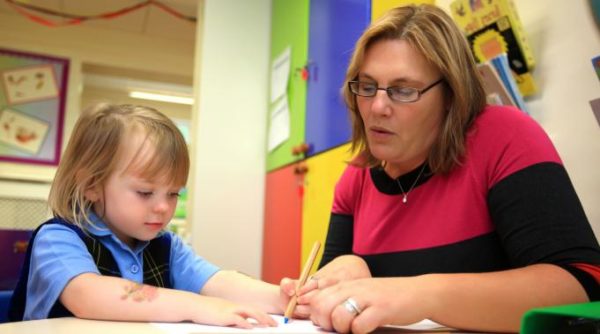
When presenting self-analysis, do not forget to evaluate the use of techniques for individualizing tasks
Self-analysis of a lesson on speech development in the senior group “A fairy tale comes to visit us”
During the lesson “A fairy tale comes to visit us,” the following goals were set: to develop the ability to recognize individual fairy tales by characteristic features and be able to play them out, activate speech, enrich vocabulary, learn to select antonym words that define heroes; maintain interest in fairy tales, promote the development of moral qualities in children, evoke sympathy, empathy, and a desire to help.
Integration of educational areas: “Communication”, “Cognition”, “Physical Education”, “Music”.
Preliminary work: reading fairy tales about animals, fairy tales, social fairy tales, looking at illustrations for fairy tales, talking about fairy tales, reading proverbs, dramatization games based on fairy tales.
Direct educational activities (hereinafter referred to as GED) were carried out with a group of children of senior preschool age 5–6 years old.
The educational activity itself consisted of three interconnected parts, during which children gradually performed various actions. This structure is completely justified, since each part of direct educational activity is aimed at solving certain problems and offers a choice of methods and techniques.
Introductory part: organization of children, motivation for upcoming activities. At the organizational stage of the NOD, the problem-situational method was used. The children were invited to go to a fairyland.
The main part of the educational activity was a specially organized and independent activity of children aimed at solving assigned problems.
Throughout the entire process, the NOD created problematic situations, rescuing the heroes of fairy tales from the Serpent Gorynych.
In the final part of the NOD, she also used a game problem situation - returning to the group by counting on an airplane carpet; there were surprise moments, these were characters from fairy tales (Baba Yaga and Cinderella), memorable souvenirs (books). She reinforced the positive results of the session with verbal encouragement.
To implement each task, I selected techniques that helped solve them. The techniques were based on play situations in which I tried to consolidate children's knowledge about fairy tales.
When working with children, I used conversation, questions to children for intelligence and logical thinking - all this contributed to the effectiveness of educational activities, mental activity and cognitive development of children.
The material for the educational activities was selected at a level accessible to children, corresponded to their psychological characteristics and was rational for solving the set goals and objectives. They were active, attentive, and felt comfortable. All this is confirmed by the results of our activities.
All elements of GCD are logically united by a common theme.
This structure of the lesson is completely justified. Since each part of the lesson is aimed at solving certain pedagogical problems and offers a choice of adequate methods and techniques. The content of the lesson corresponded to the assigned tasks.
Activities at GCD are characterized as joint and individual.
At GCD I used the following forms of work: frontal, individual, group.
The following methods were used: verbal (questions to children, clarification, encouragement, selection of antonym words); visual demonstration (depiction of fairy tale characters, objects with which they are associated); practical (finger gymnastics “Favorite Fairy Tales”, puzzles of fairy tale heroes, physical education on a fairy tale, laying out grains, psycho-gymnastics “Kolobok”), gaming (travel to a fairy tale land, helping the heroes of fairy tales), as well as control methods (analysis of completed tasks), the results were evaluated activities with the help of memorable souvenirs (books).
Methods include a system of techniques that are combined to solve learning problems. Techniques (explanations, instructions, demonstration, commands, play techniques, artistic expression, encouragement, helping the child, analysis, introductory conversation) are aimed at optimizing the individual development of each child.
I believe that the form of organizing the direct educational activities of children that I chose was quite effective and dynamic. I tried to comply with the norms of pedagogical ethics and tact. I believe that the tasks set in direct educational activities were completed. GCD achieved its goal.
Akinina N.A., teacher of MBDOU No. 1 “Topolyok”, p. Samara, Azov district, Rostov region
https://multiurok.ru/files/samoanaliz-otkrytogho-zaniatiia-po-fgos-2016gh.html
Video: self-analysis of a lesson in a preparatory group on the topic “You are good, Zimushka-winter”
Analysis by those present
To assess the practical benefits of the demonstration lesson and the methodological knowledge of the teacher, a plan is used that structurally resembles self-analysis.
This is interesting. The plan for analysis by those present in an open lesson does not differ from the analysis of a regular lesson.
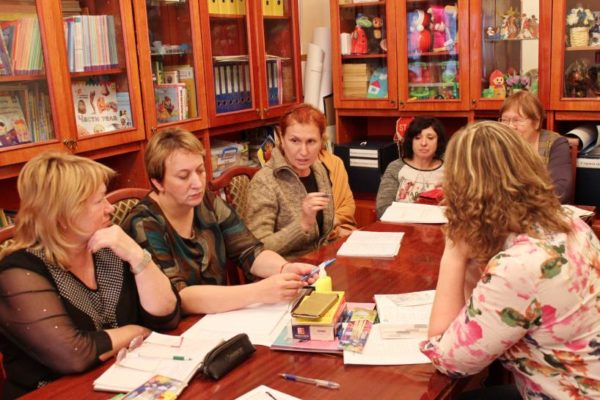
Analysis by those present is useful for guests in that it works to enrich their own methodological experience
Table: algorithm for conducting analysis by those present
| Stage | The essence |
| We assess children's readiness for the lesson. | We pay attention to how the teacher explained to the children the presence of strangers in the lesson, and then to the motivation for subsequent work. |
| We analyze the correspondence of the actual content of the lesson to the set goal. | It is necessary to analyze the correspondence of the actual content of the lesson (the amount of material offered to children, its nature, the use of games and exercises) to the set goal. |
| We determine the effectiveness of children's organization. | In accordance with the purpose of the lesson, it is necessary to determine the effectiveness of organizing children in it: the choice of teaching methods and techniques, from the point of view of suitability for achieving the goal of the lesson, the effectiveness of methods for stimulating the cognitive activity of children, the optimal rate of speech of the teacher and the pace of children’s work, ways of attracting children’s attention, the use of techniques that prevent fatigue, the level of development of organizational skills. |
| We analyze the progress of the lesson. | Assessment of the appropriateness of time distribution for different types of activities, changes in different types of activities, both in content and in the form of perception. |
| We evaluate the structure of the lesson and provide a qualitative description of its individual elements. | It is necessary to analyze the compliance of the chosen structure of the lesson with respect to the goal, as well as the motivation and sequence of each stage of the lesson, the logical connection between them. The motivated microclimate of the lesson should be assessed. |
| We analyze the methods used to form assessment and control actions. | It is important to analyze whether the teacher stimulates children to control and evaluate speech activity, and whether he creates situations of mutual control. |
| We carry out a general assessment of the lesson. | It is necessary to summarize previous findings and evaluate the lesson. |
| https://www.maam.ru/detskijsad/analiz-zanjatija-vo-vremja-provedenija-otkrytogo-zanjatija-analiz-zanjatija-analiz-otkrytogo-zanjatija.html | |
Table: example of analysis of a lesson on speech development in the preparatory group “Retelling the story by E. Charushin “The Little Foxes”
Author - Orlova E.E., senior teacher of the Municipal Budgetary Educational Institution "Veshchevskaya Secondary School", pos. Veshchevo, Leningrad region.
The goal was achieved within a sufficient amount of time (35 minutes), children were prepared to solve this goal in previous lessons, the goal corresponds to the capabilities and abilities of the children. Integration of educational areas in accordance with the age capabilities and characteristics of students in the classroom is implemented through appealing to the experience of children in other educational areas (cognitive development, social and communicative development). The lesson corresponds to: general educational and developmental goals and objectives, the level of development of students, their age characteristics; complex thematic principle (the topic of this lesson was chosen in the context of the general theme “Autumn”). During the lesson, joint activities of adults and children are realized; the main component is interaction.
Video: analysis of three open classes in kindergarten to assess children's readiness for school
Group analysis
The essence of this analysis is that the guests present at the lesson take turns expressing their opinions regarding what they saw and heard, without adhering to a clear plan. This method of analysis is subjective, but useful from the standpoint of exchanging experiences and opinions. In other words, this conversation is a kind of mini-teaching council.
This is interesting. From the point of view of productivity of analysis, group analysis is less effective, since each viewer identifies something close and interesting for himself, but this approach does not allow him to see the whole picture. Therefore, methodologists, even using this type of discussion, still insist on self-analysis and analysis by those present according to the scheme.
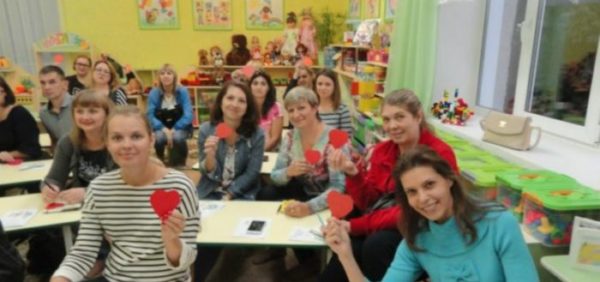
Parents can participate in a group discussion by giving ratings in the form of hearts
Video: group form of analysis of an open lesson on patriotic education on the topic “Our friendly family”
Analysis of an open lesson is carried out in two forms: by the teacher himself and by the guests present at the lesson. At the same time, the structure of both one and the other analysis is generally the same, but the differences lie more in the degree of objectivity than in the approach to analyzing what was seen. To analyze the open lesson of a teacher participating in a teacher training competition, a point scale is used to evaluate each stage of the lesson, which prevents subjectivity in the distribution of prizes between participants. Each of these types can be supplemented by a group discussion of a demonstration lesson.
Source
| Observing the progress of the lesson | The goals and objectives of the upcoming activities were revealed to the students quite convincingly, clearly and emotionally. The work was meaningful, interesting and organized. All children were interested in mastering the ability to retell the piece they had listened to fully and closely to the text. During the lesson, students acquired basic knowledge of breaking a text into parts (this skill was formed with the help of sequential thematic pictures), the ability to distinguish between singular and plural, and the ability to change words using endings and selecting endings in accordance with the gender and number of words were consolidated. During the lesson, the students showed the ability to control their answers and the answers of other children, and help each other with difficulties with answers. The children demonstrated concentration of attention when listening to the story and a retelling that was quite close to the text. |
| Methods and techniques used | During the lesson the following methods and techniques were used: focusing and attracting attention; activation of speech and cognitive activity; activation of independent thinking; using childhood experience; development of creative abilities; self-control and mutual control. During the lesson, a change of types of activities was used, the logic and validity of the transition from one type of activity to another was observed. The teacher’s questions were developmental in nature. During the lesson, TSOs such as a projector with a screen were used. During the lesson, a presentation was used, with the help of which the main stages of the lesson were visualized. |
| Analysis of the teacher’s activities | During the observation of the teacher’s activities during the lesson, the following was revealed: from the very beginning, the teacher attracted the children’s attention to the topic of the lesson and kept the children’s attention throughout the entire educational activity; the teacher’s speech was clear and emotionally charged; the teacher encouraged children to show initiative and independence; the teacher, whenever possible, took into account the characteristics of each child (pace of activity, emotional state, level of development, temperament); the teacher helped children control their behavior during class and reminded them of the basic rules of behavior; The teacher observed sanitary norms and rules, the safety of children (ventilated room, physical education, safety of materials, equipment, etc., prevention of posture disorders). |
| Comments, recommendations | Stimulate and encourage children's individual achievements; try to “see” each child, listen and hear his answers, suggestions, statements. |
Methodological commentary for the integrated lesson “Where the bread came from.” Chugreeva O.A. material
Methodological comments on the integrated lesson
“Where the bread came from” for children 6-7 years old.
CHUGREEVA O. A.
An integrated lesson on cognitive development for children 6-7 years old “Where did the bread come from” in a fun way introduces children to the work of peasants in the old days, to the activities of modern grain growers, and promotes the development of interest in experimental activities.
The purpose of the pedagogical event is to introduce children to the process of growing cereals and preparing bread and bakery products in the process of experimental research activities. This goal is achieved through the following tasks:
Educational:
- Systematize knowledge about the types, cultivation of cereal crops, the work of a grain grower, agronomist, combine operator, tractor driver, baker (the sequence of growing cereals, the process of making bread from flour).
- Improve the ability to construct a statement, use different parts of speech in accordance with their meaning, coordinate words in a sentence.
- To promote the development of the ability to examine objects and phenomena from different angles, to identify relationships.
- Establish the nature of the influence of environmental factors on plant life.
- Strengthen skills in planting and caring for cereals.
Educational:
- To develop the cognitive activity of children in the process of experimental research activities, through the creation of problem situations.
- Develop the ability for speech planning, establish cause-and-effect relationships.
- Develop search activity and intellectual initiative.
- Develop the ability to plan your activities, the ability to formulate the purpose of researching a problem, put forward hypotheses, compare and draw conclusions and conclusions.
- Develop communication skills; improve skills of connected utterances, contribute to the expansion of vocabulary.
- Develop independent practical skills.
- Develop concentration, memory, thinking, curiosity.
Educational:
- To cultivate a caring attitude towards bread, a sense of respect and gratitude towards people who work in agriculture.
- Foster a love of nature and the ability to care for plants.
- Cultivate interest in the history of native culture and Russian traditions.
- Maintain a connection between past and present.
As a result, children should develop the prerequisites for the development of independent cognitive activity in the process of experimental research activities, through the creation of problem situations.
The integrated lesson scenario is compiled in accordance with the objectives of the educational program and corresponds to the age of the children.
For each moment of the lesson, visual aids were selected that stimulated and activated children in problem-search mental activity. Visual aids meet aesthetic requirements; their placement and use during the lesson was thoughtful and rational.
The following resources were used during the lesson: a multimedia presentation, an audio recording of playing the gusli, an interactive whiteboard, paintings depicting the cultivation of wheat in the old days, a reproduction of B. M. Kustodiev’s painting “Threshing”, items of wooden Russian folk utensils (a rolling pin, a sieve, a mortar, spoons, bowls, boards), towels, towels, ears of wheat, rye, oats, flour, sheaf of ears, various baked goods, images of baked goods, signs of good growth conditions, plants, objects for experimental activities, objects-baking products: eggs , flour, starch, butter, sugar, salt, baking powder, mixer, coffee grinder, mortar.
When conducting the lesson, health-saving, gaming, ICT technologies, personality-oriented technologies, and research technologies were used.
The lesson includes the following methods and techniques: verbal, visual, practical methods, problem-based learning, which involve changing the children’s activities.
A surprise moment (the visit of Varvara the Beauty with a riddle-treat) helped to interest the children in exploring the process of growing cereal crops, preparing flour and baking bread and bakery products. The students became more familiar with the way of life and the life of the Russian people, with the work of peasants and the professions of people associated with this work. The children conducted a series of experiments using sensory analyzers to study the properties of flour (smell, density, flowability, reaction with water). The result of the lesson was making pies from ready-made yeast dough and treating them to various bakery products.
The lesson traces the integration of educational areas.
Cognition. The children got to know in more detail the traditions of the Russian people, their way of life, the technology of growing grain crops in the old days and compared them with modern technologies. We examined a reproduction of B. M. Kustodiev’s painting “Threshing”, thereby consolidating the previously studied material.
Speech development. The children answered questions with complete answers, composed a story based on the paintings “Journey to the Old Time” using detailed sentences, put forward their hypotheses and assumptions, drew conclusions and conclusions about the experiments carried out. The children's vocabulary was enriched, they learned poems, proverbs, sayings about bread,
Social and communicative development. Children participated in the general conversation, expressed their opinions, listened to the statements of their peers, and showed interest.
Artistic and aesthetic development. During the trip, the children listened to a piece of music performed by the ensemble of Russian folk instruments “My Gusli Gusli”, looked at a reproduction of B. M. Kustodiev’s painting “Threshing”, this interested and inspired the children to independently prepare pies from yeast dough.
Physical development. During the lesson, health-saving technologies were observed, children moved frequently, and physical education was conducted.
Throughout the entire event, I tried to maintain the children’s interest in the lesson, direct them to find a solution to the problem, activate the children’s independence, mental and speech activity, and maintain a positive emotional mood. She constantly encouraged and praised the children to reinforce their sense of success.
I think that the lesson was productive, in an interesting way, the goal I set was achieved, and the program tasks were solved.
The children carried out their independent experimental and research activities. They learned how much effort and labor people previously spent (even in modern times) to grow grain crops and make bread, and became acquainted with the different professions of grain growers. The children developed a respectful, caring attitude towards bread and the people who make it.
I will continue to work with children on research and experimental activities. We will develop new projects, explore and study the world around us!
